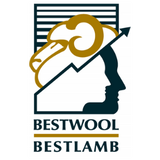This event was a joint initiative of Central Murray BestWool BestLamb and WMLIG made possible through funding from Meat & Livestock Australia and Australian Wool Innovation Ltd.
As part of the popular Annual Wakool Sheep Night, WMLIG held a workshop on 'breeding the perfect sheep' on the 24th of June 2019, at the Wakool Club. This event was attended by 73 landholders and agribusiness professionals.
The workshop was presented by Dr Mark Ferguson, managing director of NeXtgen Agri Ltd, Christchurch NZ. He explored the concept of a 'perfect' sheep, the importance of having a plan and the power of breeding values.
Balance makes a perfect sheep in Mark's opinion. Your sheep are not in a controlled environment and so need to be able to cope with feed and environmental variability and flexibility in marketed product (wool and meat).
The perfect sheep:
The genetic selections you make today will last 10 years, so they must be suitable for your business. You must be aware of your priorities: are you after wool, meat or a dual purpose sheep? What is the market seeking and what is our feed availability going forward?
How do you distinguish genetic gain from better feed or a change in management? Mark commented that there is nothing more powerful than seeing the performance of stock from two different sires under the same conditions.
Key genetic traits for your business:
Don’t forget about ram selection. You need to select a ram with proven breeding value. For example, in a trial a flock was divided into two mobs, with each impregnated with different sires. These flocks were then tested in different locations, under different environmental conditions. The progeny of sire A outperformed sire B at both sites. However, if the two mobs were not being assessed in the same environmental conditions, then it may appear that sire A progeny performed poorly against sire B, as progeny from sire A were subjected to tougher environmental conditions than sire B.
WMLIG would like to thank Wakool Club for catering the event and ensuring all attendees had plenty of delicious food!
Event summary courtesy of the Koondrook Barham Bridge Newspaper.
The workshop was presented by Dr Mark Ferguson, managing director of NeXtgen Agri Ltd, Christchurch NZ. He explored the concept of a 'perfect' sheep, the importance of having a plan and the power of breeding values.
Balance makes a perfect sheep in Mark's opinion. Your sheep are not in a controlled environment and so need to be able to cope with feed and environmental variability and flexibility in marketed product (wool and meat).
The perfect sheep:
- Traits that make you money
- Traits that save you money
- Traits that save you time
- Traits that delight a customer
The genetic selections you make today will last 10 years, so they must be suitable for your business. You must be aware of your priorities: are you after wool, meat or a dual purpose sheep? What is the market seeking and what is our feed availability going forward?
How do you distinguish genetic gain from better feed or a change in management? Mark commented that there is nothing more powerful than seeing the performance of stock from two different sires under the same conditions.
Key genetic traits for your business:
- Feed conversion: selecting sheep for higher muscle caps mature weight and size, they require less feed and have higher lamb survivability and condition score. A wider, shorter brick type sheep can often“do more with less”.
- Maternal efficiency: it’s all about ‘kg of lamb weaned to kg of ewe that is serviced by the ram’. The bigger the ewe, the more feed required to get it to a healthy breeding size and then to maintain. 70% of ewe cost is just in maintenance. Even in a wool scenario, running a big framed sheep with insufficient feed will hurt productivity significantly.
- Great wool: not necessarily lots of wool but good quality. Quality opens up a huge market for what your wool can be used for, from socks to sporting active wear. The chasing of heavy wool cuts leads to a reduction in fertility as energy is diverted from body condition to wool production. A cut of 10% or 1kg of fleece per 10kg of liveweight is optimal.
- Worm & Foot Rot resistance: a genetic trait that can be passed on into your flock
- Dags: producers should be aware that if you select for worm resistance and ignore dag resistance, the sheep will become more daggy. By selecting for dag resistance, crutching costs can be greatly reduced.
- Fast growth : getting to weight early allows for adaptation to changing seasonal conditions without the need to hold stock for long periods of time trying to get them to weight. The risk you need to consider when chasing growth rate is a bigger sheep. Ideally we want a sheep that grows fast and stops at a muscly round build rather than a tall, lanky sheep.
- Reducing wrinkle: the more wrinkle a sheep has, the less productive it is. The other issue with wrinkle is the need for mulesing. There are already wool buyers searching for wool specifically from non-mulesed sheep.
Don’t forget about ram selection. You need to select a ram with proven breeding value. For example, in a trial a flock was divided into two mobs, with each impregnated with different sires. These flocks were then tested in different locations, under different environmental conditions. The progeny of sire A outperformed sire B at both sites. However, if the two mobs were not being assessed in the same environmental conditions, then it may appear that sire A progeny performed poorly against sire B, as progeny from sire A were subjected to tougher environmental conditions than sire B.
WMLIG would like to thank Wakool Club for catering the event and ensuring all attendees had plenty of delicious food!
Event summary courtesy of the Koondrook Barham Bridge Newspaper.







